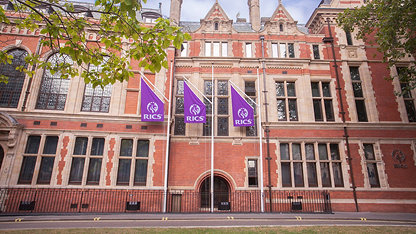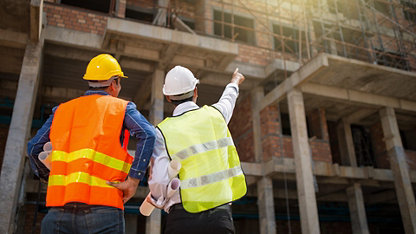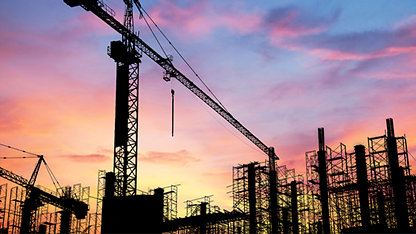On 12 April 2025, 08:00 BST, we will be disabling logins for specific member-facing platforms to improve internal processes. We expect this to finish 12 April 2025 at 17:00 BST.
The construction industry is coming to terms with the way COVID-19 is dictating new ways of working, delaying many projects. Many surveyors, though, are having to deal with the contractual implications.
Some contracts can excuse failures and potential breaches of contract which arise as a result of force majeure. Surveyors therefore need to know how and when force majeure may and may be asked to make decisions about whether, for example, a contractor is entitled to extend the date for completion.
Significantly, force majeure only applies if there is a force majeure clause in the contract – it is not a general legal principle of universal application. Many JCT contracts contain a force majeure provision, whereas NEC contracts contain the equivalent of a force majeure regime.
Is COVID-19 a force majeure event?
There is no simple legal definition of what constitutes force majeure as this always depends on the wording of the contract. Both the wording of the force majeure clause and the contract as a whole need to be looked at to decide the legal effect – if any – of COVID-19.
Some construction contracts contain a list of potential force majeure events such as epidemics or acts of government which may or may not be beyond the parties’ control. A clause which only gives relief when force majeure ‘hinders’ or ‘prevents’ the carrying out of the works will be treated differently from another which refers to performance being ‘impossible’ – the latter will be more difficult to prove.
The precise words used in a contract matter, both in the standard contract and any amendments. JCT contracts refer to force majeure without any further explanation. In the case of British and Associated Industries (Cardiff) Limited v Patley Pressings Limited [1953] 1 WLR, the term ‘the usual force majeure conditions shall apply’ was found to be too vague and therefore unenforceable. However, it is unlikely a court would find the JCT force majeure clause void; this would have serious repercussions for the construction industry – if an extension of time is not given a contractor may potentially be liable to pay damages for a delay to the completion.
In a far longer definition, the NEC requires the event to have such ‘a small chance of occurring’ that it would have been unreasonable for an experienced contractor to have allowed for it. For the NEC foreseeability is crucial.
There is no guaranteed answer as to whether COVID-19 is a force majeure event for any given contract. Bearing in mind the impact the pandemic has had on the country, the economy and construction, my view is that COVID-19 is likely to be a force majeure event, particularly under a JCT or NEC Contract.
Extensions of time
Subject to giving the right notices, if COVID-19 is a force majeure event, it should give rise to an extension of time under a JCT contract, and both additional time and money under an NEC contract. At present, the lack of a clear substantive legal definition of what a force majeure is means many professionals are avoiding the issue of whether an extension of time should be granted at all. No one wants to be the first person to grant an extension of time in these circumstances.
Extension of time claims bring their own challenges too. Firstly, the correct notices have to be given. The NEC 4, for example, requires notices to be sent within eight weeks of the ‘event’ taking place, but this particular deadline is often changed. If a notice has been given dealing only with the closure of a site to take stock and work out what to do next in the light of advice from the government, this may not cover the situation when the site re-opens and the works restart where progress is slow due to social distancing measures. If the first notice only covers the works being suspended a second notice may be required for the works re-starting but with new restrictions delaying them.
Secondly the party seeking an extension will need to demonstrate that COVID-19 was the reason for delaying the completion date. If there was, for example, a three-day shutdown in March 2020, this won’t automatically mean a three-day extension will be granted to a completion date which was due to take place in a years’ time; up-to-date programming information is still needed by, for example, updating the critical path.
Thirdly, and this is often overlooked, nearly all construction contracts impose a requirement on contractors to mitigate or use their best endeavours to reduce delays.
Yet again, there is no definition legal guidance of what best endeavours means. The judge in the case of Sheffield District Railway v Great Central Railway (1911) said ‘Best endeavours means what it says – it does not mean second best endeavours’.
Keating on Building Contracts Sixth Edition states that how a contractor should go about exercising best endeavours depends on each case, but ‘it does not contemplate the expenditure of substantial sums of money’. In my view, a best endeavours obligation in the case of COVID-19 would at least involve:
- cooperating and dealing with quickly all risk assessments and requests for information as to how the works are to cope with social distancing
- re-programming the works to cope with the new arrangements
- replacing staff who can no longer work and bringing back furloughed staff to cope with any labour shortages
- continuing safely with off-site activities, for example producing drawings.
For many construction contracts force majeure gives rise to more time but not money. This has led to reliance on other clauses which could potentially give rise to both an extension of time and loss and expense. These include:
- complying with an instruction to shut a site – an instruction to cease works will likely count as an act of prevention, which too could give rise to claims for time and money
- provisions which allow the employer or project manager to postpone all or part of the works; exercising this power will normally give rise to an extension of time and loss and expense
- a failure to provide safe working practices can amount to prevention, hindrance or even a breach of contract, again entitling the contractor to time and money.
The NEC is a notable exception, COVID-19 can amount to a ‘compensation event’ leading to additional time as well as money.
Importantly, the contractor must demonstrate the additional costs are attributable to the delay or shutdown due to COVID-19. Records should be clear. As an example, demobilisation and remobilisation costs during a shutdown should be recorded separately. Similarly, suppliers’ invoices should not simply cover all the materials delivered to site before and after a shutdown – it should be clear which materials increased in cost as a result of the shutdown and why.
Returning to site and ensuring social distancing is bound to impact progress, yet frequently timesheets show that everyone on site was working for a certain number of hours with little indication of what they were doing, or any of the difficulties faced. Time sheets and a daily or weekly site diary should show who was working where and when, and what problems they faced.
- Jon Miller is a partner at Fenwick Elliott LLP: jmiller@fenwickelliott.com














